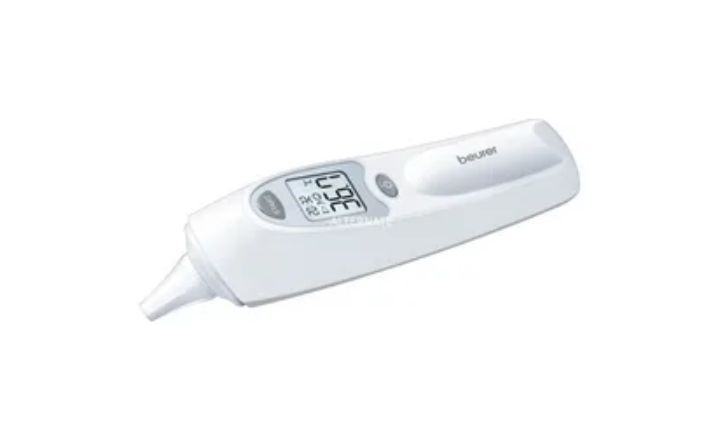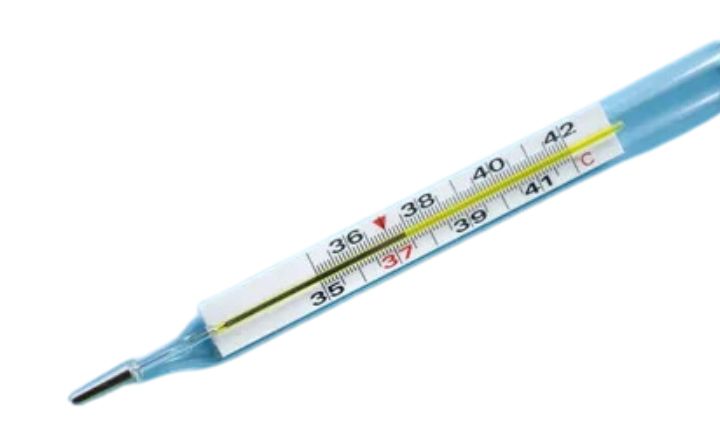Why is My Dog’s Head Hot? A Useful Guide
Have you ever wondered why your dog’s head feels unusually warm, leaving you to question, “Why is my dog’s head hot?” It’s a common concern among pet owners, and understanding the reasons behind it can be crucial for your furry friend’s health.
From fever and overheating to allergies and underlying conditions, a hot head could signal various issues that require attention. In this article, we will explore these potential causes, provide tips on regulating your dog’s temperature, and offer strategies for diagnosis and treatment.
Reasons for Dog’s Head Feeling Hot
Here we will discuss top reasons why your dog’s head is hot?

1. Fever
When you notice that your dog’s head is hot, it can be a concerning sign that their immune system is working overtime to fight off an underlying issue. A fever in dogs typically manifests when their body temperature rises above the normal range, signaling that they may be battling bacterial or viral infections, or even parasites. This natural response is part of their defense mechanism, as an elevated temperature creates an environment less hospitable to pathogens.
Interestingly, fevers can also occur after vaccinations, as your dog’s immune system kicks into gear to build immunity against potential threats. While a mild fever post-vaccination is generally normal and should resolve on its own, it’s essential to monitor your pet for other symptoms. If you observe persistent signs of discomfort or if their condition worsens, consulting with your veterinarian is crucial. Understanding these nuances not only helps you recognize when your furry friend might be unwell but also deepens the bond between you as you care for their health.
Here are the reasons why a dog may have a fever:
Bacterial or viral infections are among the most common culprits, as they can provoke an immune response that raises body temperature.
Conditions like kennel cough or parvovirus often lead to elevated fevers, serving as a warning sign that your furry friend is fighting off an invader.
It’s essential to monitor other symptoms such as lethargy, loss of appetite, or unusual behavior, which can help pinpoint the cause of the fever.
2. Infectious Disease
The primary types of infectious diseases commonly
- Distemper.
- Skin infections (Pyoderma, Ringworm).
- Bacteria, parasites, and fungi.
- Ear infections.
- Kennel cough.
- Parvovirus.
Infectious diseases in dogs can manifest through a variety of symptoms that pet owners should be vigilant about. One telling sign is when a dog’s head is hot to the touch, often accompanied by noticeable inflammation. This heat can indicate an underlying infection, whether it’s an ear infection or a systemic issue. When dogs shake their heads or scratch at their ears, it’s not just a quirky behavior; these actions may be their way of coping with discomfort caused by inflammation or irritation.
How do you protect your dog from infectious diseases?
starts with maintaining a clean environment.
Regularly washing your dog’s toys.
Bedding, and food dishes can drastically reduce the risk of exposure to harmful pathogens.
Just as you wouldn’t want to live in a dirty space, your pup thrives in a hygienic setting. Pay special attention to places where your dog spends time.
Disinfecting high-traffic areas can prevent the spread of germs that lead to illness.
3. Heat Stroke or Overheating
Heat stroke in dogs is a serious condition that can escalate quickly, often catching pet owners off guard. When a dog’s body temperature rises to dangerous levels, it can lead to irreversible organ damage or even death. Signs such as dry or sticky gums, abnormal gum color, and lethargy serve as urgent red flags, indicating that immediate action is needed. Beyond the obvious symptoms, watch for unusual bruising in the gums and rapid breathing, which can signal that your furry friend is in distress.
Preventing heat stroke requires vigilance, especially during scorching summer days. Leaving a dog inside a parked car even for a few minutes can transform into a life-threatening scenario within moments. Moreover, engaging in excessive exercise during peak temperatures can push a dog’s limits beyond safety. Being mindful of the signs and taking proactive measures, like providing plenty of shade and fresh water, can make all the difference in ensuring your canine companion remains healthy and happy when the mercury rises.
4. Dog Allergies
Dog allergies can manifest in various ways, with each type presenting unique challenges for both pets and their owners.
Food allergies often arise from specific ingredients in a dog’s diet, leading to symptoms like vomiting and gastrointestinal upset. Identifying the trigger can be a painstaking process, often requiring an elimination diet to pinpoint the offending food.
On the other hand, skin allergies frequently result from environmental factors such as pollen, dust mites, or flea bites, causing relentless scratching and irritation that can lead to secondary infections.
Environmental allergies are particularly insidious, as they can fluctuate with the seasons, leaving dogs uncomfortable and their owners frustrated. A warm head in dogs can be a subtle sign of allergic reactions, indicating systemic inflammation.
This symptom may go unnoticed until it escalates into more severe issues like wheezing or respiratory distress.
By understanding the nuances of dog allergies, pet owners can take proactive measures whether through specialized diets, topical treatments, or allergy testing to enhance their furry friends’ quality of life and ensure their comfort throughout the year.
5. Dehydration
Dehydration in dogs can escalate quickly, often unnoticed until it becomes a serious concern. One of the most telling signs is dry gums, which can feel tacky to the touch, indicating that your furry friend is not getting enough fluids.
Sunken eyes and a lack of skin elasticity are further indicators that should raise alarm bells for pet owners. Regularly checking these signs can be a lifesaver, especially during hot weather or after vigorous play sessions.
Dehydration is often exacerbated by conditions like vomiting and diarrhea, which can lead to a vicious cycle of fluid loss. When a dog experiences these symptoms, it’s essential to monitor their hydration levels closely, as even minor imbalances can affect their overall health and energy levels.
Keeping fresh water readily available and encouraging your dog to drink can make a significant difference. Consider adding ice cubes to their bowl or offering ice chips as a refreshing treat; both can entice them to hydrate more effectively.
6. Stress
Stress in dogs often manifests in subtle yet significant ways, and one of the most telling signs is a noticeable increase in body temperature, particularly in their head. When a dog experiences anxiety or fear, their body releases hormones like cortisol and adrenaline, triggering a physiological response that can elevate their overall stress levels.
This reaction is not just limited to behavioral changes; it can lead to excessive panting and sweating, which many pet owners may misinterpret as signs of physical exertion or heat exhaustion.
Understanding your dog’s stress triggers is essential for effective management. Common stressors can range from loud noises and unfamiliar environments to changes in routine or household dynamics. By identifying these triggers, you can create a more supportive environment that helps your dog feel secure.
Simple interventions like providing a quiet space, engaging in calming activities, or incorporating pheromone diffusers can significantly reduce stress and restore your dog’s emotional balance.
Remember, a relaxed dog is not only healthier but also more enjoyable to be around, so taking proactive steps to alleviate stress can benefit both you and your furry companion.
7. Inflammation
Inflammation in dogs is more than just a visual cue; it’s a complex biological process that serves as the body’s defense mechanism against harm. When your furry friend experiences an injury or infection, their immune system kicks into high gear, sending white blood cells and other chemicals to the affected area.
This response can lead to noticeable symptoms like swelling, redness, and heat, but it’s also a sign that your dog’s body is actively working to heal itself. However, while inflammation is crucial for recovery, persistent or chronic inflammation can lead to more serious health issues, such as arthritis or autoimmune disorders.
Understanding inflammation’s role in your dog’s health offers an opportunity for proactive care. Regular veterinary check-ups can help catch early signs of chronic inflammation, allowing for timely interventions that may include dietary adjustments, supplements, or medication.
Being mindful of your dog’s lifestyle such as maintaining a healthy weight and providing appropriate exercise can significantly impact inflammatory responses. Recognizing the signs of inflammation not only aids in immediate care but also enhances your ability to contribute to your dog’s long term well being.
8. Juvenile Cellulitis
Juvenile Cellulitis, often referred to as Puppy Strangles, is a perplexing condition that can strike fear into the hearts of new puppy owners.
This uncommon skin disorder typically manifests in puppies between three to six months of age, presenting itself through alarming symptoms such as a hot head, painful lesions around the eyes and mouth, and noticeable inflammation of the skin and lymph nodes.
While the exact cause remains elusive, it’s believed to be an autoimmune response where the body mistakenly attacks its own tissues.
What makes Juvenile Cellulitis particularly challenging is not just the physical symptoms but also the emotional toll it takes on both puppies and their owners. The sight of a once vibrant pup suffering from swelling and discomfort can be heart wrenching.
There’s hope; with prompt veterinary care and appropriate treatment often involving corticosteroids most puppies can make a full recovery.
As pet owners, being vigilant about any unusual signs in our furry friends can lead to early detection and better outcomes, ensuring that these innocent souls bounce back to their playful selves.
9. Canine Vaccinations
After your dog receives canine vaccinations, you might notice a slight increase in body temperature, often manifesting as a warm head.
This reaction is a normal part of the immune system’s response to the vaccine, as it gears up to create protective antibodies. While a mild fever is usually not a cause for concern, it’s important to monitor your pup closely during this time.
However, if your dog’s temperature seems excessively high or if they display unusual lethargy or discomfort, it’s essential to consult your veterinarian promptly. Your vet can assess whether the reaction is within the expected range and may provide medications to alleviate any discomfort.
Understanding these responses helps pet owners realize that canine vaccinations are not only vital for their dog’s health but also a sign that the immune system is actively working to build defenses against diseases.
10. Autoimmune Disorder
An autoimmune disorder in dogs can be likened to a misguided army that, instead of defending its territory, begins to attack its own troops. This internal conflict can lead to a variety of distressing symptoms, making it crucial for pet owners to recognize the signs early.
Conditions like Lupus and Pemphigus are among the most prevalent autoimmune disorders in dogs, manifesting through inflammation, fever, and blistering skin lesions. The emotional toll on both the dog and its owner can be profound, as the once vibrant companion may appear lethargic and uncomfortable.
Understanding these disorders requires a nuanced perspective. For instance, while the physical symptoms are alarming, they often stem from a deeper imbalance in the immune system. This insight highlights the importance of holistic approaches to treatment, including diet adjustments and stress management, which can play a pivotal role in managing autoimmune disorders.
Regular veterinary check-ups and blood tests can help monitor the condition, allowing for timely interventions that could significantly improve a dog’s quality of life. Embracing this proactive mindset not only fosters better health outcomes but also strengthens the bond between dogs and their devoted owners.
11. Injury
Injuries in dogs can often manifest in ways that extend beyond the physical, triggering emotional responses that may leave your furry friend feeling anxious and withdrawn. When a dog experiences an injury, it’s not just the body that suffers; the mind can also take a hit.
This trauma may lead to behavioral changes, such as increased aggression or a “hot head” demeanor, as your dog grapples with the pain and confusion surrounding its injury. Understanding this connection between physical and emotional health is crucial for pet owners aiming to provide comprehensive care during recovery.
Symptoms such as swelling, discomfort, and fever are more than just indicators of an injury; they signal a call for attention and empathy from their human companions. Swelling can often be visually alarming, but it’s essential to recognize that it represents the body’s natural response to trauma.
When left unaddressed, it can escalate into deeper issues, leading to chronic pain or further complications. As you monitor your dog’s condition, keep an eye on their emotional state as well. A comforting presence, gentle handling, and positive reinforcement can significantly alleviate stress, helping to restore both physical health and emotional balance.
What is the Normal Body Temperature of a Dog?
The normal body temperature of a dog typically ranges from 100.5 to 102.5 degrees Fahrenheit (38.0 to 39.2 degrees Celsius). It’s important for pet owners to be aware of this range, as deviations can indicate health issues. A dog’s temperature can be influenced by various factors, including age, activity level, and the environment.
If your dog’s temperature exceeds 103 degrees Fahrenheit, it may be a sign of fever or an underlying health problem, and you should consult a veterinarian promptly. Elevated temperatures can result from infections, inflammation, or heatstroke, among other conditions. Monitoring your dog’s temperature regularly can help you catch potential health issues early, ensuring your furry friend stays happy and healthy.
How Do You Check a Dog’s Body Temperature?
You can check the dog’s temperature using one of the following methods.
Digital Ear Thermometer
To check a dog’s body temperature effectively, using a digital ear thermometer can be a quick and less invasive option compared to traditional rectal thermometers. Start by ensuring your dog is calm and comfortable, as this will make the process easier for both of you.

Follow the manufacturer’s instructions for your specific thermometer, which typically involves gently inserting the device into the ear canal to get an accurate reading. The measurement usually takes only two to three seconds, allowing you to monitor your dog’s health without causing unnecessary stress.
It’s important to note that normal body temperature for dogs ranges from 101°F to 102.5°F (about 38.3°C to 39.2°C). If the reading falls outside this range especially if it exceeds 103°F (39.4°C) it may indicate a fever or other health issue, and you should consult your veterinarian.
Remember, while digital ear thermometers are convenient, they may not be suitable for all dogs, particularly those with ear infections or excessive wax buildup. In such cases, consulting your vet for the best method of temperature measurement is advisable.
Digital Rectal Thermometer
To check a dog’s body temperature accurately, a digital rectal thermometer is the most reliable method. To begin, ensure you have a thermometer specifically designed for pets, as these typically provide quicker readings and are more suitable for the task.

Before starting, it’s important to prepare your dog by having a family member they trust nearby for comfort. You can also offer treats to help create a positive association with the process.
When you’re ready, gently lift your dog’s tail and lubricate the thermometer tip with a water-based lubricant. Carefully insert the thermometer about an inch into the rectum and hold it in place until it beeps or signals that it’s done.
The normal body temperature for dogs ranges from 101 to 102.5 degrees Fahrenheit. If you get a reading outside this range, or if your dog shows signs of distress or illness, consult your veterinarian for further guidance. Remember, while this method may be uncomfortable for your pet, it is quick and provides the most accurate results.
Mercury Rectal Thermometer
To check a dog’s body temperature accurately, the most reliable method is using a digital rectal thermometer designed for pets. Start by applying a small amount of lubricant, such as petroleum jelly, to the thermometer tip to make the process smoother and more comfortable for your dog.

Gently lift your dog’s tail and insert the thermometer about one inch into the rectum, holding it in place until it beeps, indicating that the reading is complete. A normal temperature for dogs typically ranges from 100.5°F to 102.5°F (38.1°C to 39.2°C).
While using a mercury thermometer is possible, it is generally not recommended due to safety concerns; they can break easily and pose risks of exposure to toxic mercury. Additionally, the time it takes to read the temperature can make your dog anxious.
If you’re unsure or uncomfortable taking your dog’s temperature yourself, consult your veterinarian for guidance or to have them perform the procedure in a stress-free environment for your pet. Always remember that if your dog’s temperature is outside the normal range, it’s essential to seek veterinary advice promptly.
How to Check Your Dog’s Temperature Without a Thermometer?
Here are the alternative ways to check if your dog has a higher body temperature:
Touch and Feel
While checking your dog’s temperature without a thermometer isn’t the most precise method, you can gain some insights by using touch. Focus on areas of their body that are less furry, such as the nose, ears, armpits, and groin.

If these areas feel significantly warmer than usual, it may indicate that your dog has a higher body temperature than normal.
Check Your Dog’s Gums
Checking your dog’s temperature without a thermometer can be done by observing several physical signs, one of which is examining their gums. Healthy gums should be a nice pink color and moist to the touch.

If your dog’s gums appear bright red or dry, it may indicate a fever or dehydration. Additionally, check for any changes in the texture; if they feel tacky or sticky, this could also signal an elevated body temperature.
Check Your Dog’s Nose
While checking your dog’s temperature without a thermometer can be challenging, there are some general signs you can look for. One common method is to examine your dog’s nose.

A warm or dry nose may indicate a fever, but it’s important to note that this is not a definitive measure. Some dogs naturally have warmer or drier noses than others, so consider this as just one piece of the puzzle.
Common Symptoms of a Hot Head in Dogs
There are other symptoms you may notice affecting your dog’s health, such as:
A dog’s forehead being hot can be a clear indicator that something is amiss, particularly when accompanied by red or flushed gums. This unusual coloration often signals that your pup’s body temperature is elevated, a condition that requires immediate attention.
Pay close attention to your dog’s ears as well; if they appear flushed or pinkish, it’s another sign that your furry friend might be overheating. Together, these symptoms paint a concerning picture and highlight the importance of monitoring your dog’s health.
Excessive drooling and heavy panting can also accompany a hot forehead, serving as your dog’s natural response to try to cool down.
If you notice your dog excessively drooling or foaming at the mouth, it’s crucial to act swiftly. These behaviors, combined with potential vomiting or diarrhea, suggest that your pet is struggling to regulate its body temperature effectively.
Weakness or lethargy may follow, as the stress of overheating takes a toll on their energy levels. Recognizing these signs early can make all the difference in ensuring your dog stays safe and healthy during those sweltering days.
Diagnosing a Hot Head in Dogs
Here are some ways to identify whether your dog has a hot head or not!
When you notice that your dog’s head is hot, it can be a cause for concern, prompting a thorough physical examination by your veterinarian. During this assessment, the vet will not only take your dog’s temperature but also evaluate their respiratory and heart rates, searching for any signs of inflammation or pain.
It’s crucial to communicate any behavioral changes you’ve observed, such as whining or lethargy, as these details can provide valuable context for the vet. The duration of the heat in your dog’s head and any home remedies you’ve attempted can also guide their diagnosis.
Blood tests are instrumental in understanding why your dog’s head is hot. A Complete Blood Count (CBC) may reveal underlying infections or inflammatory conditions, while a chemistry panel can shed light on potential organ dysfunctions.
If the initial findings suggest deeper issues, imaging tests like X-rays or CT scans come into play, allowing for a closer inspection of your dog’s head and neck. For even more detailed insights, an MRI can identify subtle abnormalities that might be overlooked by other methods. By piecing together these diagnostic tools, you and your vet can create a comprehensive picture of your dog’s health, paving the way for effective treatment and a quicker recovery.
How to Treat a Dog’s Hot Head?
There are some ways to treat if your dog’s head feels hot, as discussed below:

When you notice that your dog’s head is hot, it can be a sign of underlying health issues such as infection or inflammation. One effective approach to treating this condition is to consult with your veterinarian, who may recommend specific medications tailored for your furry friend.
Aspirin, specially formulated for dogs, can provide relief when administered at the correct dosage under professional guidance. It’s crucial to ensure that any medication is safe for your dog’s unique health profile.
In addition to aspirin, nonsteroidal anti-inflammatory drugs (NSAIDs) like Carprofen, Meloxicam, and Firocoxib can significantly alleviate symptoms associated with fever and inflammation. These medications work by reducing pain and swelling, helping your dog feel more comfortable.
Always monitor your pet closely after administering any medication, and maintain open communication with your veterinarian regarding any changes in your dog’s behavior or health. Remember, while a hot head may seem alarming, proactive treatment and attentive care can lead to a swift recovery for your beloved companion.
How to Treat Your Dog’s Hot Head At Home?
If there’s an emergency where you cannot consult the veterinarian, how do you treat your pup’s hot head at home?
Treating your dog’s hot head at home involves a few simple yet effective strategies to help regulate their body temperature. First and foremost, ensure your dog has access to a cool environment.
Keeping them in shaded areas, under fans, or in air conditioned rooms can significantly help lower their body temperature. It’s essential to monitor the temperature of the environment, especially during warm weather, to prevent overheating.
Hydration is also crucial for cooling your dog down. Make sure your pet has constant access to fresh water, encouraging them to drink more if they seem overheated. Additionally, applying cool compresses to their head and neck can provide immediate relief.
Use a damp cloth or a cooling mat specifically designed for pets; this can help activate their body’s natural cooling mechanisms and soothe any discomfort they may be experiencing. Always keep an eye on your dog’s behavior and consult a veterinarian if you notice persistent signs of overheating or distress.
Prevention Strategies for a Hot Head in Dogs
A dog’s head is hot for various reasons, and understanding how to prevent overheating is crucial for their health and happiness.
One effective strategy is to avoid excessive direct sunlight; prolonged exposure can elevate your dog’s body temperature, particularly in the head area. Consider creating shaded spots in your yard or using pet-friendly sunblock on areas prone to sunburn, like the nose and ears.
Timing is everything when it comes to exercise. Opt for early morning or late evening walks to keep your furry friend active without the risk of overheating.
Regular grooming is also essential; trimming long hair not only helps regulate your dog’s temperature but also reduces the likelihood of matting that can trap heat.
Always ensure your pup has access to fresh water, as hydration plays a vital role in maintaining their natural cooling process.
Lastly, never leave your dog in a parked car, as temperatures can skyrocket within minutes, leading to dangerous consequences. By incorporating these strategies, you can help keep your dog’s head cool and comfortable all summer long.
When to Consult the Veterinarian?
When your dog has a hot head, it can be an indication of fever or underlying health issues that require immediate attention. While home remedies may provide temporary relief, they should not replace professional veterinary advice.

If the elevated temperature persists for more than a few hours or is accompanied by other symptoms such as lethargy, vomiting, or changes in appetite it’s essential to consult your veterinarian as soon as possible.
Veterinarians are equipped to diagnose the root cause of your dog’s symptoms and provide appropriate treatment. Conditions like infections, heatstroke, or even certain chronic illnesses can manifest through a hot head.
Early intervention can make a significant difference in your dog’s recovery, ensuring they receive the care they need in a timely manner. Remember, when in doubt about your pet’s health, it’s always best to err on the side of caution and reach out to a professional.
Conclusion
A hot head in your dog can be attributed to various factors ranging from minor stress to more serious health issues such as an autoimmune disorder. Understanding the underlying causes and recognizing the symptoms is crucial for any responsible dog owner.
By staying informed and vigilant, you can ensure that your pet receives the appropriate care when needed. We encourage you to consult your veterinarian if you notice any concerning signs or changes in your dog’s behavior. Remember, proactive care is key to maintaining your furry friend’s health and happiness!
FAQs
Is it normal for dogs’ heads to be hot?
Yes, it’s quite normal for a dog’s head to feel warm to the touch, especially after you’ve been petting them. The increased blood flow to the area due to stimulation can raise the temperature of the skin temporarily. Dogs have a higher body temperature than humans, typically ranging from 100 to 102.5 degrees Fahrenheit, so their heads may naturally feel warmer than you might expect.
Should I be worried if my dog feels hot?
If your dog feels hot to the touch or exhibits signs of overheating, it’s essential to monitor their condition closely. A normal body temperature for dogs ranges between 101 to 102.5°F. If you suspect that your dog’s temperature exceeds 103°F, this could indicate a fever or heat stress, which requires prompt veterinary attention.
Can you tell if a dog has a fever by their head?
While it’s a common belief that you can tell if a dog has a fever by touching their head, this method is not reliable. A dog’s head may feel warm due to various reasons, such as being in a sunny spot or after physical activity.
The best way to accurately determine if your dog has a fever is to measure their body temperature using a digital thermometer designed for pets. A normal temperature for dogs typically ranges between 101°F and 102.5°F (38.3°C to 39.2°C), so any reading above this range may indicate a fever.
What can I give my dog for a fever?
If you suspect your dog has a fever, it’s crucial to first confirm it using a thermometer. A normal temperature for dogs typically ranges from 101 to 102.5 degrees Fahrenheit. If your dog’s temperature is above this range, it may indicate a fever, and you should consult your veterinarian for appropriate guidance.







